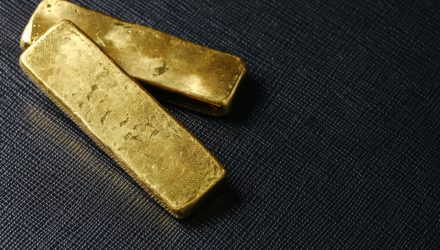Market uncertainty may have left the building, which could be taking the steam out of gold’s recent rally higher. As such, with a risk sentiment renewed and reinvigorated, the capital markets saw yields climb higher during Wednesday’s trading session.
Gold was still able to eke out a gain, but it’s recent run is now in question.
“Gold prices closed slightly higher after a wild trading session Wednesday, extending a volatile spell for the market as climbing yields on U.S. government bonds sap investors’ appetite for the precious metal,” a Wall Street Journal article noted. “Futures contracts for delivering gold in December, which notched a record high just last week, ended the day up 0.1% at $1,949 a troy ounce in choppy trading. Prices moved in a wide range overnight and during the regular session in New York, between a low of $1,874.20 and a high of $1,961.”
This could be a minor speed bump as a number of analysts were looking forward to gold rallying even higher. Nonetheless, the volatility could be making new gold investors think twice.
“The swings are interrupting a historic rally in precious-metal prices, which have soared as investors sought alternatives to low-yielding bonds and a haven from the economic downturn caused by coronavirus,” the article added. “Most-active gold futures hit an all-time closing high of $2,069.40 a troy ounce on Aug. 6 and remain about 28% higher than they were at the end of 2019.”
Gold Price in US Dollars data by YCharts
Getting High Yield Exposure
ETF investors looking for high yield exposure can look to funds like the iShares iBoxx $ High Yield Corporate Bond ETF (HYG). HYG seeks to track the investment results of the Markit iBoxx® USD Liquid High Yield Index.
The underlying index is a rules-based index consisting of U.S. dollar-denominated, high yield corporate bonds for sale in the U.S. The fund generally will invest at least 90% of its assets in the component securities of the underlying index and may invest up to 10% of its assets in certain futures, options and swap contracts, cash and cash equivalents, as well as in securities not included in the underlying index.
Another fund to look at is the FlexShares High Yield Value-Scored Bond Index Fund (HYGV). The fund seeks investment results that correspond generally to the price and yield performance, before fees and expenses, of the Northern Trust High Yield Value-Scored US Corporate Bond IndexSM.
The index reflects the performance of a broad universe of U.S.-dollar denominated high yield corporate bonds that seeks a higher total return than the overall high yield corporate bond market, as represented by the Northern Trust High Yield US Corporate Bond IndexSM. The fund generally will invest under normal circumstances at least 80% of its total assets (exclusive of collateral held from securities lending) in the securities of its index.
For more market trends, visit ETF Trends.


